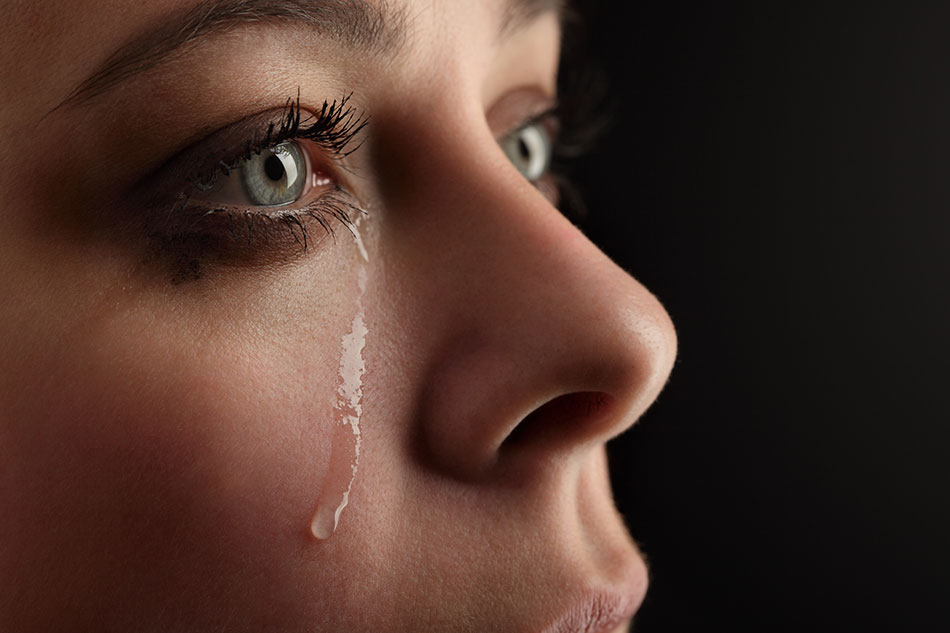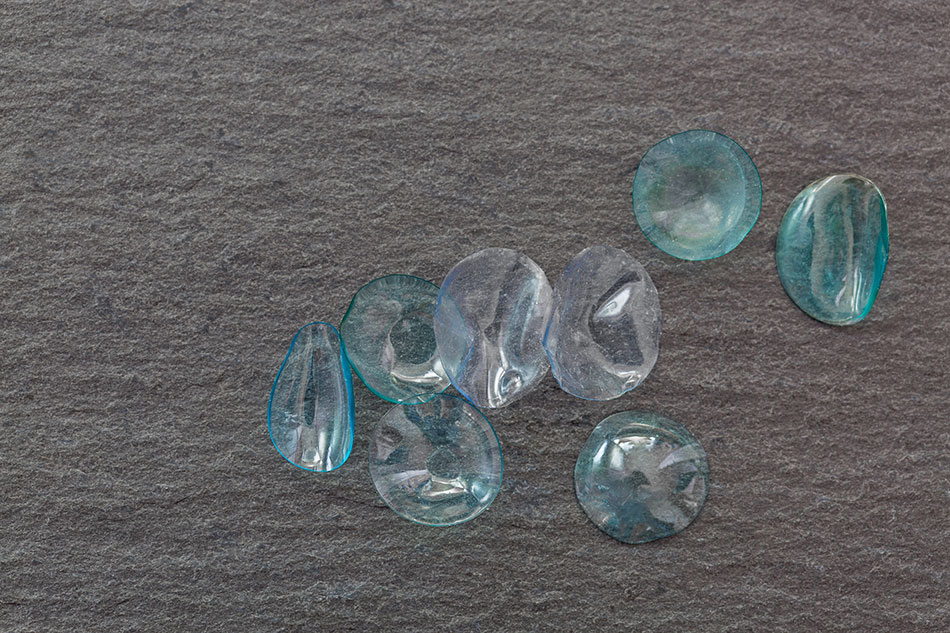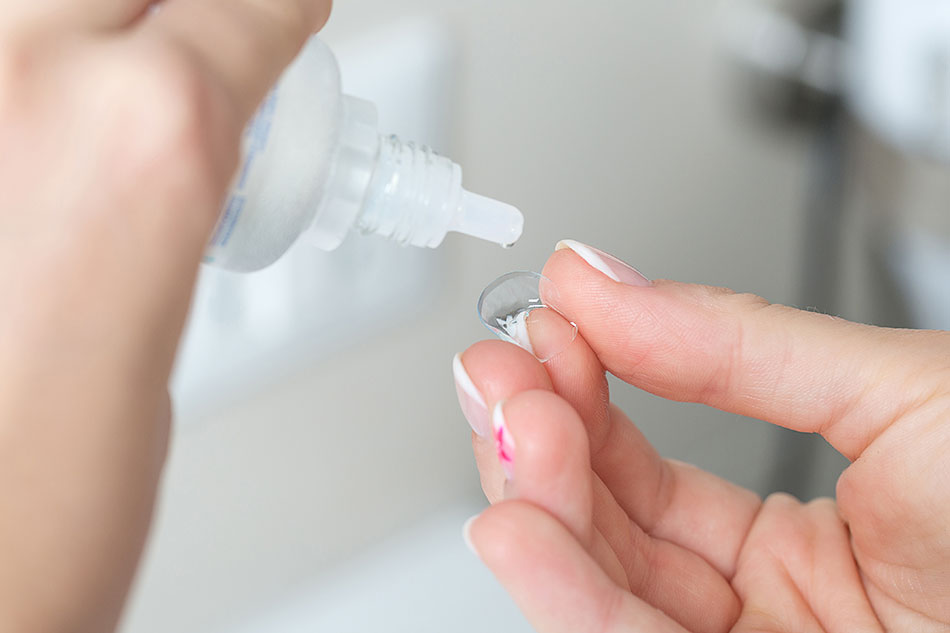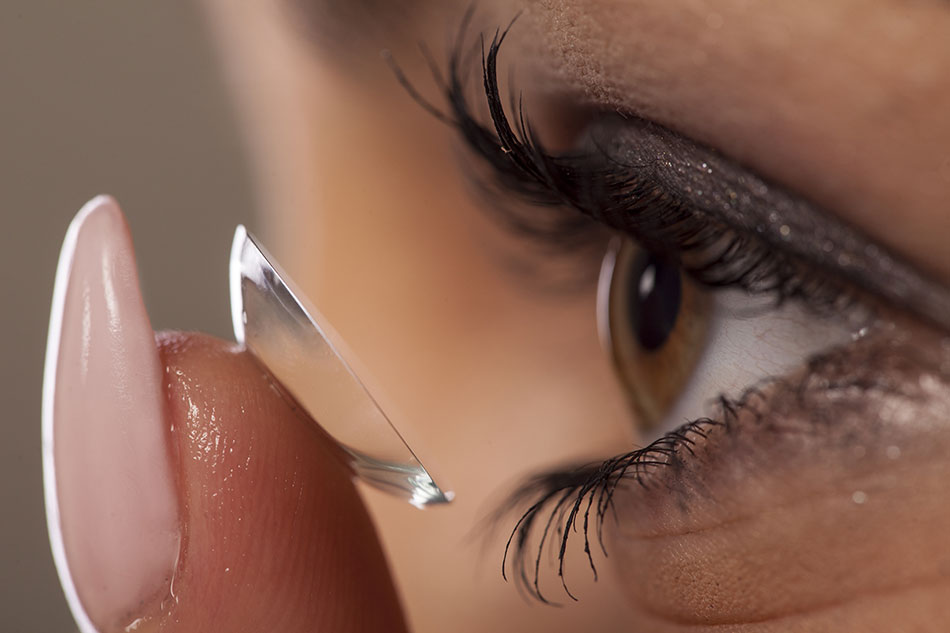Crying With Contacts - Is It Dangerous? And Other Myths About Contact Lenses

How everyone discovers their vision problems tends to be similar. As children, we may have noticed that we couldn’t read the whiteboard anymore. Or maybe we could no longer see the college professor’s notes on the screen. Or maybe we experienced headaches after reading. Or maybe we could no longer make out the words on the menu in a dimly lit restaurant. We then had to go to the optometrist for an eye exam. What followed was our very first pair of glasses.
Glasses are the traditional vision correction aid. But contact lenses are a viable alternative, as approximately 3.5 million Canadians use them.
You've probably heard the rumours about contact lenses, and some of them are downright dangerous or plain false. From crying with contacts to sharing a pair with your best pal, we’re putting these myths to rest.
Common Myths About Contact Lenses
As with any medical device, using contacts correctly is important for your health. To clear up any questions you may have, check out these contact lenses myths:
Myth #1: Crying With Contacts In Is Dangerous
If you've ever cried while wearing contacts, you may have noticed that your vision became cloudy. This happens because of the extra tears. Contacts are built to handle a certain amount of normal tears, but crying can throw this off-kilter.
Rest assured that this cloudiness might be inconvenient, but it doesn't carry any health risks. It's safe to cry while wearing contacts. But they may not adhere to your eyes very well due to your tears.
Your contacts can also stick to your upper eyelids. This may be uncomfortable, but it’s not dangerous. You can carefully manipulate them back into position.
It’s best not to rub your eyes while crying because you can damage the lenses. Wiping away your tears can also cause your contacts to drop out, so be careful! We recommend removing and cleaning your contacts after a crying session.
Myth #2: Contacts Only Have Wear Limits to Make You Buy More; Over-Wearing Them Doesn't Hurt You

Some people are always on the alert for scams, and that's where this myth comes in. The limits on how long you can wear certain contacts are there for your health.
Daily, weekly, and monthly contacts are made from materials that degrade after a certain time. The limits aren't there to encourage you to buy more contacts than necessary. They're there to give you the best vision possible and protect you from infections and other problems. So no matter what contacts you have, throw them away after length of time they were designed for (i.e. a day, a week, 2 weeks or a month).
You should also follow the daily wear limit for your contacts. Over-wearing your contacts can result in eye irritation, corneal abrasions, and corneal ulcers. You should remove your contacts at the end of the day and switch to glasses if you need to. Wearing glasses instead will give your eyes a much-needed rest and time to breathe!
Don’t forget that contacts also have an expiry date. Check the packaging for the date on yours to make sure you are not wearing contacts that have expired. That can also result in problems for your eyes, as contacts can only last so long in their packaging and they may no longer be sterile. Plus any degradation of the lens will affect your ability to see correctly.
Myth #3: It's Not a Big Deal to Sleep in Contacts
You may have slept in your contacts by mistake. It’s a dangerous game to play. Your corneas use oxygen from the air when you’re awake. Once your eyes are closed as you sleep, then the blood vessels in your eyelids supply the corneas with oxygen.
Your contact lenses cover your corneas and block your oxygen flow. Your corneas may be able to handle this situation for a few hours at a time, but extended oxygen depletion can disrupt their health.
There are serious consequences for sleeping in your contacts. Reducing your corneas' oxygen for too long can lead to keratitis (inflamed corneas). Keratitis can develop into corneal ulcers. If untreated, these ulcers could lead to severe scarring or even vision loss.
Sleeping in your lenses can also give you a bad case of pink eye (or conjunctivitis). But that’s not the only thing. You can also develop giant papillary conjunctivitis (GPC), which causes bumps on the inner surface of your eyelids. Corneal neovascularization also leads to the growth of extra blood vessels which can obscure your vision.
So it’s definitely a very bad idea to sleep in your contacts. Always remove them before going to bed each night.
Myth #4: If You Run out of Lens Solution, You Can Use Water or Saliva

Nope! This is a dangerous myth and a terrible idea! If you've ever done this, you can tell the difference. When you rinse contacts in water, they're less comfortable and harder to handle. However, that's a small problem compared to the real risks.
Contact lens solution is sterilized in a medical process. Water and saliva, on the other hand, can contain dangerous bacteria. If these bacteria infiltrate your corneas, then you could suffer dangerous infections.
Unfortunately, there are several documented cases of permanent blindness from these infections. There are even cases of vision loss from touching contact lenses with wet hands resulting in Acanthamoeba Keratitis. You do not want an amoeba eating away at your eyes and causing permanent damage.
Myth #5: Older People Can't Wear Contacts
There are some reasons behind this myth, but it's not a hard-and-fast rule. It's true that for many people, their eyes produce fewer tears as they get older. They may also lose the manual dexterity required to put in and remove their contacts. These factors can make it difficult or uncomfortable for older adults to wear contact lenses.
Everyone ages in different ways and at a different pace. But there is no age limit to wearing contacts.
Myth #6: If You Need Bifocals, You Can't Wear Contacts
For people who need bifocals, there are now a variety of available options.
Many people don't realize that bifocal and multifocal contact lenses now exist. They're not as easy to find as traditional contacts, but they are available options.
These contacts can be soft lenses or rigid gas permeable (RGP) ones. There are also many options for configuring the prescription to fit your contacts.
Myth #7: You Can't Wear Contacts With Long Nails

If you're handling your contacts correctly, your nails shouldn't matter. Instead of using your fingertip, you should use the pad of your finger to put in and remove your contacts. Never use your fingertip, as it puts you at risk of scratching your eyes.
Myth #8: Contacts Are Uncomfortable
This assumption causes many people to avoid contacts altogether. It’s true that you have an adjustment period to get used to your contacts. But it should only take a couple of weeks for you to get accustomed to them.
Finding a comfortable pair of contacts is a matter of trial and error. There are many contact lenses and brands for you to try. Your optometrist may also be able to offer you samples to try out for a few days.
Myth #9: It's Fine to Wear Contacts While Swimming

This is another myth that can have serious consequences. Many people are unaware that contact lenses are not approved for swimming or water sports.
Swimming while wearing contacts carries the same risks as rinsing them with water. The water may contain dangerous bacteria and organisms that lead to severe infections. This is also true for saltwater pools and chlorinated ones. As clean as you may think the water is, it's not worth risking your vision.
If you must swim in your contacts, always wear waterproof goggles. After swimming, you should remove and clean your reusable contacts before wearing them again. If they are daily disposables, toss them and wear a fresh pair.
Myth #10: It’s Not a Problem to Share Contacts
We know, sharing is a part of caring for your best pals. But this doesn’t apply in the case of your contacts. Your act of benevolence can expose you to harmful bacterial infections.
Contacts are created to fit one person and contain that person’s unique prescription. Wearing another person’s contacts may give you corneal abrasions and ulcers. These conditions can put your vision at risk!
Sharing contacts is a big problem. Keep your contacts for yourself alone.
Living Your Best Life With Contacts
Contacts have enhanced the lives of many. If you know how to care for them and wear them right, they will offer you effortless visual clarity. But you must educate yourself to be able to debunk all myths, from not crying with contacts to sharing them.
If you're ready to start shopping for your first (or next) pair of contacts, there are many options available.
